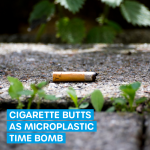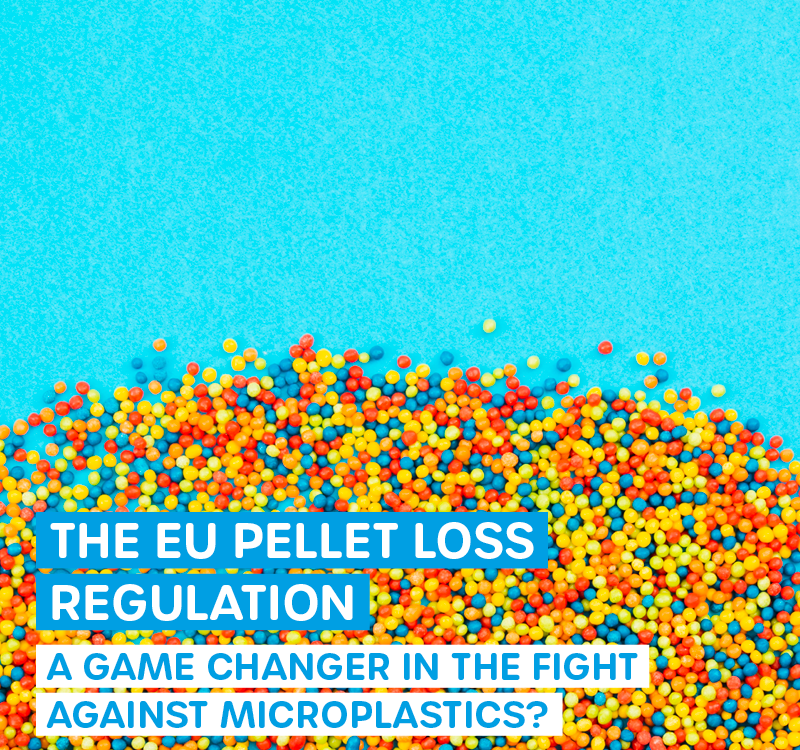
Microplastic Footprint
1. September 2025
Cigarette Butts as a Microplastic Time Bomb
8. September 2025The invisible footprint from production: Microplastics from shoe soles – an environmental impact that has hardly been recorded
While the public is distracted by supposed "credit card equivalents" of microplastic intake and simple blame-shifting to consumers, a measurable microplastic footprint is created with every step. Current research data shows: shoe sole abrasion is an under-considered and under-researched source of microplastics in our environment – and politics hides behind insufficient data and lobby estimates instead of acting according to the polluter-pays principle.
The mass production of our everyday shoes: A microplastics problem from the factory
Today's shoe production is based on highly specialized plastic compounds. Millions of shoes are produced daily, with soles consisting mainly of the following materials:
- EVA (Ethylene Vinyl Acetate): The dominant material for midsoles of modern sports shoes. EVA is produced through chain polymerization of ethylene and vinyl acetate and makes shoes lightweight and shock-absorbing. The manufacturing process of EVA foam is based on petrochemical raw materials from fossil fuels, contributing to carbon emissions and environmental destruction.
- Polyurethane (PU): The outsoles frequently consist of elastomers such as polyurethane or rubber (e.g., natural rubber, carbon rubber, polybutadiene, styrene-butadiene, or their mixtures). These materials are optimized for abrasion resistance but still continuously generate microplastic particles.
The Production Footprint
Microplastic emissions do not occur from the first day of use, but from the moment the product is manufactured. When discussing shoe soles this means:
- During injection molding processes for EVA soles
- Through cutting and production waste
- During surface treatment and texturing.
One should not neglect or overlook the so-called sprues and runners that arise during the injection molding process, which are treated as waste and disposed of. This waste is so significant that recycling approaches for EVA production waste are already being developed.
Important background knowledge for assessment: The role of polymer composition and wear characteristics of different shoe types
Polymer stability and wear resistance varies considerably between different shoe types, leading to different microplastic emission rates:
- Road running shoes: These primarily use EVA foams with 19 to 28% vinyl acetate content in the midsole for optimal cushioning. The outsole consists of carbon-reinforced rubber with a high abrasion resistance. The average lifespan is 800 to 1200 km, with harder rubber compounds releasing less microplastics.
- Trail running shoes: Characterized by soft rubber soles for better grip, which produce 77 to 343% more microplastic particles than hard rubber soles. The outsoles contain polyurethane elastomers and styrene-butadiene mixtures for traction on different surfaces.
- Sneakers and casual shoes: Sneaker soles show the highest toxicity in leaching tests. They consist mainly of thermoplastic polyurethanes (TPU) with plasticizers and stabilizers. The lower abrasion resistance leads to increased microplastic release during normal use.
- Everyday shoes vs sports shoes: Classic leather shoes with rubber sole attachments produce significantly less microplastics than fully synthetic constructions. However, EVA-based soles show first compression loss after 200 to 400 kilometers, which increases the abrasion rate.
Physiological factors and weight influence on microplastic abrasion
It is also not surprising that the mechanical stress on soles directly correlates with body weight. This means: heavy runners (>80kg) produce proportionally more sole wear, while step frequency and impact forces additionally influence particle release. Children's shoes have an increased risk of microplastic release because children's feet have a higher step frequency per kilometer (approx. 1800-2000 steps/km vs. 1400-1600 for adults). At the same time, children's shoes are often made from cheaper, less abrasion-resistant materials. The combination of more frequent ground contacts and softer sole materials leads to disproportionate microplastic release per body weight.
Gait patterns and abrasion distribution should also be considered when drawing an overall picture. Biomechanical analyses show that rearfoot, midfoot, and forefoot runners create different wear patterns. Forefoot runners produce concentrated abrasion in the toe area, while rearfoot runners show more uniform sole wear.
These points we already know from other products: Material stability under environmental influences
- UV degradation: EVA polymers show UV resistance, but prolonged sun exposure leads to polymer chain breaks and increased brittleness. This exponentially enhances microplastic release.
- Temperature effects: At higher temperatures, the polymer stability of TPU soles is reduced. In hot climates or on heated asphalt, the abrasion rate increases measurably due to thermal degradation of polymer chains.
- Material fatigue: EVA foams lose significant compression resistance after 100,000 heel strikes. This material degradation correlates with increased surface roughness and elevated particle release.
The overall picture and impact during wear: Real data instead of estimates
In contrast to vague industry estimates, concrete measurement data is already available for:
- Trail Running Studies (Forster et al., 2023): During trail running events, abrasive wear on shoe soles produced an average of 0.3 ± 0.1 to 0.9 ± 0.2 MPs/linear meter/runner.
- Surface-dependent variation: Microplastic deposition from shoes was higher on inclined and rocky path surfaces than on flat and soil surfaces. Soft rubber soles produce 77-343% more particles than other shoe types.
- High-traffic areas: A French study documented up to 800 small shoe sole pieces (~220g) per year on a 3 km hiking trail.
Climbing soles show high concentrations of 15 rubber-specific compounds (25-3405 μg/g) created by abrasion between climbing shoes and holds. These particles enter indoor air as aerosols and the environment as dust deposits.
Impact during wear also includes: Toxicological relevance of shoe sole microplastics
Sneaker sole leachates showed growth inhibition in algae, immobility and mortality in water fleas, as well as severe abnormalities in zebrafish. Aquatic toxicity was mainly associated with benzothiazole, carbon disulfide, ethyl acetate, and p-xylene.
Shoe sole fragments from sneakers increased soil density but reduced the water-holding capacity of soil. The microplastic fragments and leachates directly impaired plant growth and photosynthetic activities.
Scientifically sound data collection: Rapid microplastic analytics key for policy making
We have developed a rapid analytical method that enables standardized continuous monitoring of microplastic contamination in (waste)water treatment processes. The specialty for fast, reliable, and cost-effective microplastic detection lies in the fluorescence markers developed by us.
Microplastics come into focus of water analytics because analysis is often either too expensive, not standardized, or too complicated. We close this important gap with our anlaytical standard for microplastics in water.
With continuous data collection, we enable:
- Identification of emission sources
- Quantification of actual contamination
- Evaluation of reduction measures
- Political decisions based on data instead of lobby estimates
The conflict with the political imperative: Polluter-pays principle instead of consumer responsibility
Politics still hides behind three problematic strategies:
- Accepting lobby estimates: Industry-affiliated studies are adopted without critical examination
- Addressing consumer responsibility: Individual behavioral changes are promoted as solutions
- Ignoring data deficits: Lack of standardization is used as an excuse for inaction
What we need: A final line under science-free zones in environmental policy
Microplastics from shoe soles are a quantifiable, systematic environmental burden. With every step, measurable amounts of toxic microparticles are created that enter soils, water bodies, and the food chain.
The time of vague estimates and distraction maneuvers should finally be over with the implementation of standard analytics for microplastics. Scientifically sound rapid analytics should be commissioned promptly to create the database for effective regulation.
Or contact us! Because we deliver data quickly and independently. We build correct study designs and do not allow external influence during implementation.
What drives us is one goal: Politics must finally enforce the polluter-pays principle. Not we – the consumers – bear responsibility for systemic environmental pollution, but manufacturers must be liable for the external costs of their products.
Only this way will the necessary innovation incentives emerge for truly sustainable solutions – from plastic-free soles to circular economy production models. For clean water and healthy ecosystems, we need action instead of talk.






